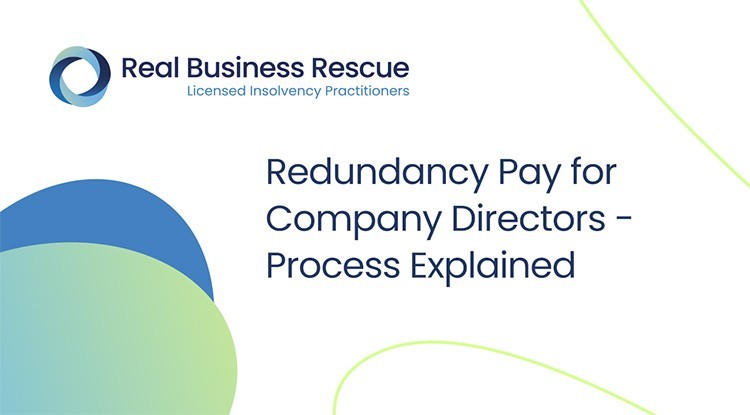How to Take Care Of Redundancy Pay If Company Goes Bust: Secret Information for UK Employees
How to Take Care Of Redundancy Pay If Company Goes Bust: Secret Information for UK Employees
Blog Article
Exploring the Interplay In Between Firm Redundancy and Business Flexibility for Future Growth
In the dynamic landscape of today's company world, the detailed relationship in between company redundancy and business adaptability arises as a crucial aspect for sustained growth and success. Firms usually encounter the obstacle of striking a delicate balance between maintaining a degree of redundancy to minimize dangers and promoting flexibility to respond promptly to the ever-evolving market demands.
Relevance of Company Redundancy
Firm redundancy is a crucial element that enhances business resilience and minimizes functional threats. By incorporating redundancy measures within the organizational structure, firms can much better withstand unforeseen disturbances and variations in business environment. Redundancy functions as a tactical buffer, allowing companies to adjust and respond efficiently to unexpected difficulties without compromising essential procedures.
One key element of the value of firm redundancy is its function in making sure connection during times of dilemma. When confronted with abrupt adjustments or emergency situations, repetitive systems, resources, or employees can action in to preserve crucial features and protect against prevalent disturbances. This connection not just safeguards the firm's credibility and client trust yet also lessens economic losses and operational downtime.

Techniques for Organizational Flexibility

Developing versatile organizational structures that permit for fast changes to market dynamics and client needs is vital for remaining competitive in a rapidly progressing setting. By proactively determining prospective interruptions and possibilities, organizations can proactively adjust and thrive in an ever-changing company landscape.
Balancing Redundancy and Flexibility
Accomplishing an unified equilibrium between functional redundancy and business adaptability is paramount in browsing the intricacies of a vibrant service environment. Redundancy within a business gives a safety web, guaranteeing connection and stability in procedures. However, an extra of redundancy can lead to inefficiencies and prevent adaptability to altering market problems. On the other hand, organizational versatility enables firms to react immediately to exterior interruptions and take new chances. Striking the ideal equilibrium between redundancy and adaptability is a fragile procedure that needs a deep understanding of the company's objectives, industry characteristics, and threat resistance.
To achieve this balance, companies require to conduct routine analyses of their procedures to determine locations where redundancy is required for danger mitigation and where versatility can drive development and development. Executing adaptable frameworks, promoting a culture of constant discovering and enhancement, and motivating open interaction across all levels of the company are crucial strategies to harmonize redundancy and flexibility efficiently. By aligning these two essential aspects, firms can position themselves for sustainable growth and success in an ever-changing organization landscape.
Situation Research Studies on Adjustment Success
In analyzing instances of effective business adjustment, it becomes noticeable that the interaction in between functional redundancy and versatility is a specifying aspect in shaping resistant organizations. One engaging situation study is that of Netflix. Initially a DVD rental solution, Netflix demonstrated exceptional adaptability by transitioning into a streaming system when digitalization disrupted the industry. By purposefully buying technology and content creation, Netflix not just flourished however survived in a quickly evolving market. One more standout example is Amazon. Starting as an online bookstore, Amazon constantly adjusted its service model, expanding you can find out more right into varied markets such as cloud computing and artificial knowledge. This adaptability allowed Amazon to stay ahead of rivals and satisfy altering consumer needs. Lastly, Adobe offers a noteworthy picture of effective adaptation. The company changed from offering software licenses to a subscription-based model, making sure recurring income streams and improved consumer engagement. These study emphasize the importance of operational redundancy paired with organizational versatility in cultivating lasting development and competitiveness.
Building Strength for Future Development
Building durability for future development needs a calculated positioning of operational procedures with market dynamics and emerging fads. Firms should adapt to altering atmospheres by fostering a culture of versatility, development, and continual renovation. Resilience entails not just recovering from troubles however likewise proactively planning for future challenges. One crucial facet of building resilience is buying robust risk monitoring strategies to minimize possible disturbances. This includes situation preparation, branching out supply chains, and creating contingency plans for various contingencies (who pays redundancy money).
Moreover, promoting strong connections with stakeholders, such as consumers, staff members, distributors, and the neighborhood, is vital for preserving and weathering unpredictabilities count on and support throughout rough times. Effective interaction and openness play an important role in structure durability, as they assist line up expectations and promote partnership in navigating uncertainties.
In addition, organizations need to focus on knowing and growth campaigns to upskill workers and outfit them with the required tools to adjust to changing situations. By buying their workforce, companies can enhance their versatility and dexterity, inevitably reinforcing their resilience for sustainable future development.
Verdict

In the vibrant landscape of today's company anchor globe, the detailed relationship between firm redundancy and business flexibility emerges as an important element for sustained growth and success. Companies typically deal with the challenge of striking a delicate balance in between keeping a level of redundancy to mitigate dangers and cultivating adaptability to respond quickly to the ever-evolving market demands.To accomplish this equilibrium, business require to perform normal assessments of their operations to recognize areas where redundancy is needed for threat mitigation and where adaptability can drive innovation and growth.In verdict, the interplay in between business redundancy and organizational adaptability is vital for future growth. Building strength click through a mix of redundancy and versatility will guarantee that firms are prepared for the difficulties of the future.
Report this page